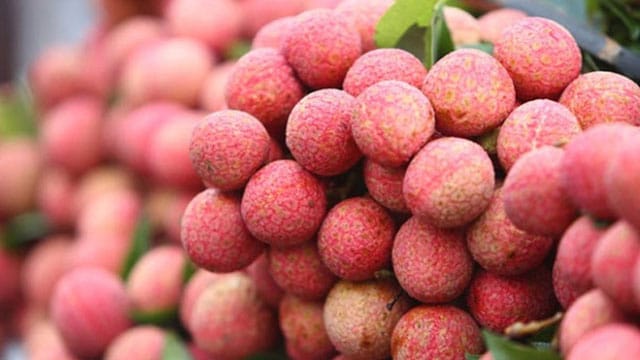Referring to the Luc Ngan region of Bac Giang province, surely any of us will immediately think of a famous fruit throughout the country and abroad that cannot be found anywhere else – Luc Ngan litchi .
Currently, our lychee has been exported and present in many countries around the world such as: China, Thailand, USA, Australia, etc. When ripe, Luc Ngan litchi has bright red color, small seeds, sweet and cool. and rich in nutrients. The lychee here is large and has a distinctive flavor that is more delicious than in other regions.
The inner pulp is where there is a lot of vitamin C, the antioxidant capacity of vitamin C in lychee is more than that of lemons and oranges. Moreover, in lychee also provides polyphenols and other nutrients that are useful for the body’s production and blood circulation…
It is not only delicious but also has many health benefits, so it is easy to understand why Luc Ngan lychee is loved by so many people.
When the lychee season is in full bloom, seeing the bright red lychees covered in the sky, Luc Ngan is a beauty worthy of the people here in particular and all the children of the Fatherland in general to be proud of their fresh homeland. his beautiful.
Source: Collected internet.
The North and North Central regions have a humid subtropical climate with 4 seasons: Spring, Summer, Autumn, and Winter. The Central and South Central regions have a tropical monsoon climate, the extreme South Central and Southern regions have tropical savanna characteristics. At the same time, it is directly influenced by the trade monsoon climate, which often blows in low latitudes. The South often has a tropical savanna climate, hot and humid with two seasons: dry season and rainy season (from April-May to October-November). Every year, the cold and humid winter typical of the North contrasts with the warm atmosphere of Tet and spring in the South.
Vietnam, whose national name is the Socialist Republic of Vietnam, is a socialist country located at the eastern tip of the Indochina peninsula in Southeast Asia, bordering Laos, Cambodia, China, and the sea. East and Gulf of Thailand. The territory of Vietnam has been inhabited since the Paleolithic era, starting with the states of Van Lang and Au Lac. Au Lac was annexed by the Trieu Dynasty in the North in the early 2nd century BC, followed by a period of Northern domination lasting more than a millennium. The independent monarchy was re-established after Ngo Quyen's victory over the Southern Han dynasty. This event paved the way for independent dynasties to succeed and then repeatedly win against wars of invasion from the North as well as gradually expanding to the south. The final period of Northern domination ended after the Lam Son insurgent army's victory over the Ming Dynasty.
Located on the banks of Ka Long, the border river between Vietnam and China, Xa Tac Temple, Mong Cai City, Quang Ninh Province, is not only a place to worship and practice folk cultural beliefs of residents. This place also has significance as a cultural milestone, affirming the sacred sovereignty of the Fatherland. Recently, this hundreds of years old historical and cultural relic was recognized by the Ministry of Culture, Sports and Tourism as a National relic because of its unique values....
The relic cluster of Ba Om Pond, Ang Pagoda, and Museum of Khmer Ethnic Culture located in Ward 8, Tra Vinh city is a famous scenic spot, cultural and historical relic of Tra Vinh province as well as the whole region. Mekong Delta region. This is also the pride of the KhMer bronze treasure.
